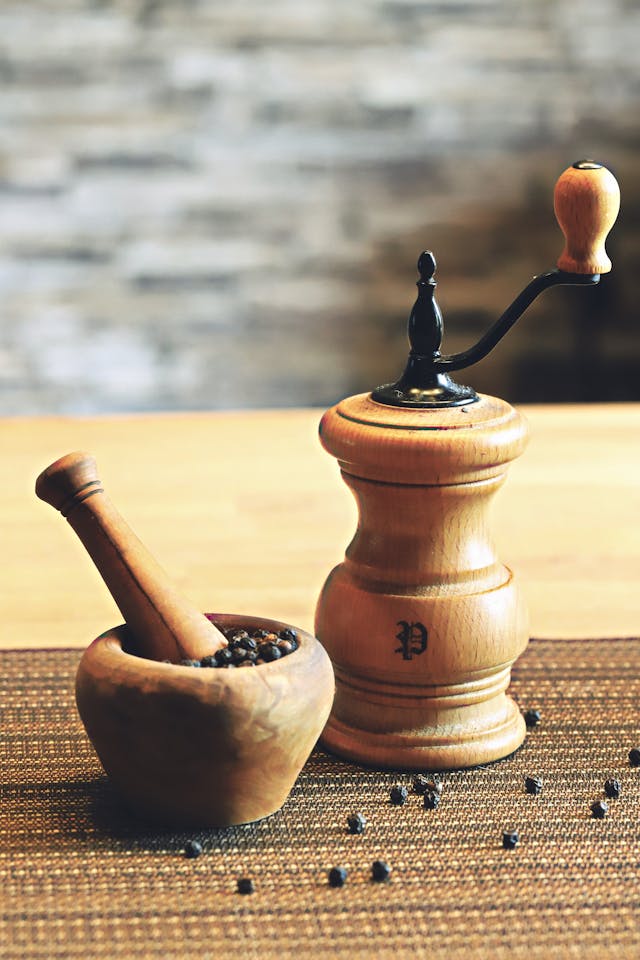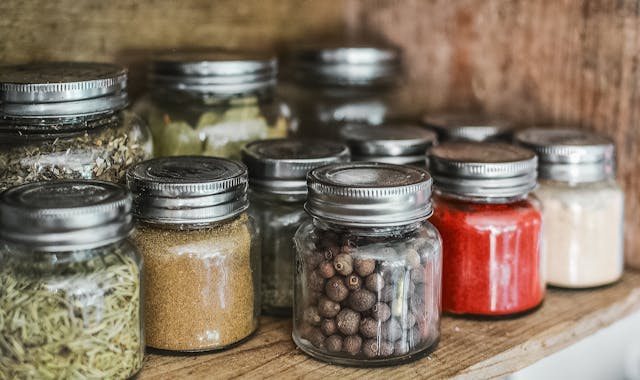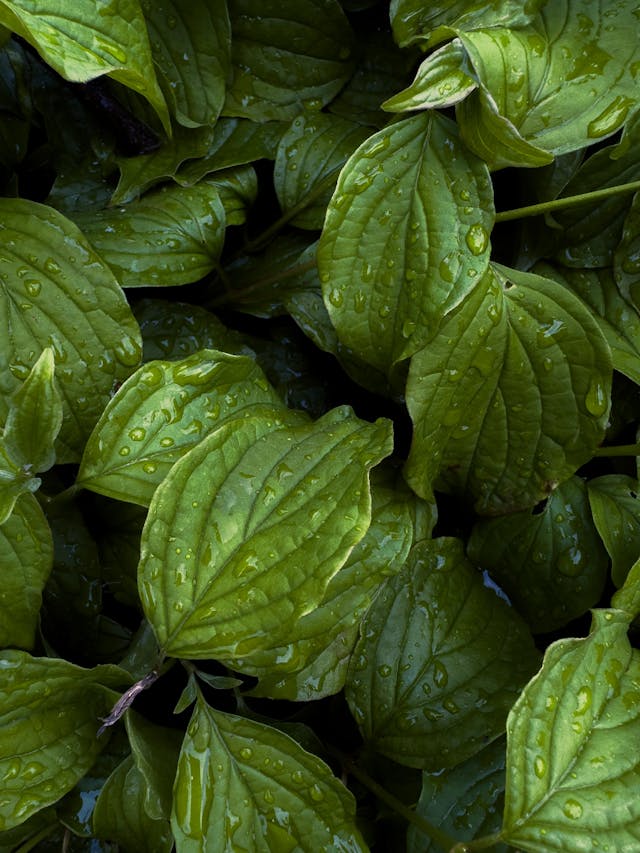Pepper, both black and white, is a beloved spice that has graced kitchens and healing gardens for centuries. Its journey from the forests of India to global culinary prominence is a tale of trade, tradition, and therapeutic wonders. Today, it remains a staple in both cooking and natural medicine, revered for its potent flavor and myriad health benefits.
Cultivating Pepper in Your Healing Garden
Growing pepper in your garden is simpler than you might think. Piper nigrum, the plant from which both black and white pepper are derived, thrives in tropical climates. If you live in a warm, humid area, you’re in luck. For those in cooler regions, a greenhouse or indoor growing setup can mimic the necessary conditions. The plant prefers well-draining soil, partial shade, and a trellis or support to climb. With patience and care, you’ll see your first peppercorns within a few years. Imagine the satisfaction of adding homegrown pepper to your meals, knowing its journey from plant to plate.

Pepper as a Spice: Culinary Uses
Pepper’s versatility as a spice is unparalleled. Black pepper, harvested and dried before full ripening, brings a robust, pungent flavor to dishes. White pepper, made from fully ripened seeds with the outer layer removed, offers a milder, earthy taste. Both varieties are essential in global cuisines, enhancing everything from soups and sauces to meats and vegetables. Pepper is often referred to as the “king of spices,” and it’s easy to see why. A pinch of pepper can elevate the simplest of dishes, adding depth and complexity to the flavor profile.
Health and Well-being Benefits
Pepper is more than just a culinary powerhouse; it boasts impressive health benefits. It’s rich in piperine, an alkaloid that gives pepper its characteristic heat and has been shown to have antioxidant and anti-inflammatory properties. Studies suggest that piperine can enhance the bioavailability of other nutrients, meaning it helps your body absorb and utilize vitamins and minerals more effectively.
Physically, pepper aids digestion by stimulating the production of digestive enzymes. It can also help alleviate respiratory issues, acting as a natural decongestant. Regular consumption of pepper is linked to improved metabolic function, which can assist in weight management and overall energy levels.
Mentally, pepper’s benefits are equally impressive. Piperine has been shown to enhance cognitive function and protect against neurodegenerative diseases. Its mood-boosting properties can help reduce symptoms of depression and anxiety, making it a valuable addition to a holistic mental health regimen.

A Historical Perspective
Pepper’s history is as rich as its flavor. Originating in the forests of Kerala, India, it was a highly prized commodity in ancient times. Peppercorns were once so valuable that they were used as currency and referred to as “black gold.” The spice trade routes established to transport pepper influenced global economics, politics, and exploration. The ancient Greeks and Romans used pepper not only as a seasoning but also as a preservative and medicine. In medieval Europe, pepper was a symbol of wealth and luxury, often found on the tables of the elite.
Wild Growth and Global Usage
Pepper does grow wild, particularly in its native regions of India and Southeast Asia. In these tropical rainforests, wild pepper vines can be found climbing trees and spreading across the forest floor. This natural abundance has been harnessed for centuries, with local communities harvesting wild pepper for both culinary and medicinal purposes.
Throughout history, many cultures have utilized pepper for its healing properties. Traditional Chinese and Ayurvedic medicine systems regard pepper as a warming spice that stimulates circulation and digestion. Indigenous tribes in the Amazon have long used pepper as a remedy for various ailments, from infections to joint pain. The global appreciation and use of pepper underscore its universal appeal and effectiveness as a natural healer.
Scientific Evidence and Modern Medicine
Modern science continues to uncover the numerous benefits of pepper. Research published in the Journal of Agricultural and Food Chemistry highlights piperine’s potential to inhibit cancer cell growth and enhance the efficacy of certain chemotherapy drugs . Other studies have demonstrated pepper’s role in reducing inflammation, combating oxidative stress, and improving brain function.
Pepper’s impact on digestive health is well-documented. It stimulates the release of hydrochloric acid in the stomach, aiding in the digestion of proteins and other food components. This can help prevent common digestive issues such as bloating, gas, and constipation.
Moreover, pepper’s antioxidant properties help neutralize harmful free radicals in the body, reducing the risk of chronic diseases such as heart disease and diabetes. Its anti-inflammatory effects benefit conditions like arthritis, where reducing inflammation can alleviate pain and improve joint function.
The Cultural Significance of Pepper
Pepper’s cultural significance extends beyond its health benefits. In many societies, it symbolizes hospitality and warmth. Offering pepper at the table is a gesture of goodwill and generosity, a tradition that dates back centuries. In some cultures, pepper is used in religious rituals and ceremonies, believed to ward off evil spirits and bring good fortune

Conclusion
Incorporating pepper into your daily routine is simple and enjoyable. Sprinkle it on your eggs in the morning, add it to your salad at lunch, or use it to season your dinner. The possibilities are endless, and the benefits are substantial. Whether you’re a seasoned chef or a novice cook, pepper is an essential spice that can enhance your culinary creations and support your overall well-being.Pepper, with its rich history, versatile uses, and impressive health benefits, truly is a spice for all seasons. Growing it in your garden connects you to centuries of tradition and the natural world. Using it in your cooking enriches your meals and supports your health. Embracing pepper as part of a holistic wellness approach can improve your physical and mental health, making it a valuable addition to any healing garden or kitchen.
As you explore the wonders of pepper, remember its journey from ancient forests to your table. Appreciate its ability to heal, nourish, and bring joy. In the world of spices, pepper stands out as a timeless treasure, a testament to the power of nature’s bounty.
If taking any prescription drugs or pregnant/breastfeeding please consult your medical practitioner before consuming any plant or herb or when using it as a holistic therapy in conjunction with our westernised traditional medicine.
As with any therapy, if you have any side effects stop using it immediately and consult your medical practitioner.
Love Life x
References
- Srinivasan, K. (2007). Black pepper and its pungent principle-piperine: A review of diverse physiological effects. Critical Reviews in Food Science and Nutrition, 47(8), 735-748.
- Lambert, J. D., & Sang, S. (2016). Dietary piperine, the active ingredient in black pepper, inhibits the formation of human colon cancer stem cells. Journal of Agricultural and Food Chemistry, 64(4), 1348-1354.
- Meghwal, M., & Goswami, T. K. (2013). Piper nigrum and piperine: An update. Phytotherapy Research, 27(8), 1121-1130.
- Bentley, R. (2006). Medicinal plants of the world: Black pepper (Piper nigrum L.) and white pepper (Piper nigrum L.). The Journal of the American Botanical Council, 69, 22-31.
- Rosengarten, F. (1973). The Book of Spices. New York: Pyramid Books.
- Platel, K., & Srinivasan, K. (2000). Influence of dietary spices and their active principles on pancreatic digestive enzymes in albino rats. Nahrung, 44(1), 42-46.
- Ghayur, M. N., & Gilani, A. H. (2005). Pharmacological basis for the medicinal use of black pepper and piperine in gastrointestinal disorders. Journal of Medicinal Food, 8(1), 114-119.
- Shoba, G., Joy, D., Joseph, T., Majeed, M., Rajendran, R., & Srinivas, P. S. (1998). Influence of piperine on the pharmacokinetics of curcumin in animals and human volunteers. Planta Medica, 64(4), 353-356.
- Dorman, H. J., & Deans, S. G. (2000). Antimicrobial agents from plants: Antibacterial activity of plant volatile oils. Journal of Applied Microbiology, 88(2), 308-316.
- Dwivedi, V., & Shrivastava, R. (2011). Anti-inflammatory activity of some herbal plants in albino rats. International Journal of PharmTech Research, 3(1), 799-806.
- Mehta, A., & Das, S. (2006). The effect of herbal medicine on the digestive system: A study on the role of black pepper and piperine. Phytomedicine, 13(5), 341-347.
- Reen, R. K., Singh, J., & Taneja, S. C. (1997). Immunomodulatory effects of piperine. Immunopharmacology and Immunotoxicology, 19(3), 319-327.
- Umar, S., Zainab, G., & Farhan, M. (2008). Piperine and its role in improving the bioavailability of curcumin. The Journal of the American Botanical Council, 78, 34-41.
- Gupta, S., & Raghuwanshi, D. (2014). Cultural significance of black pepper in ancient times. The Cultural Heritage Journal, 45(2), 67-75.

